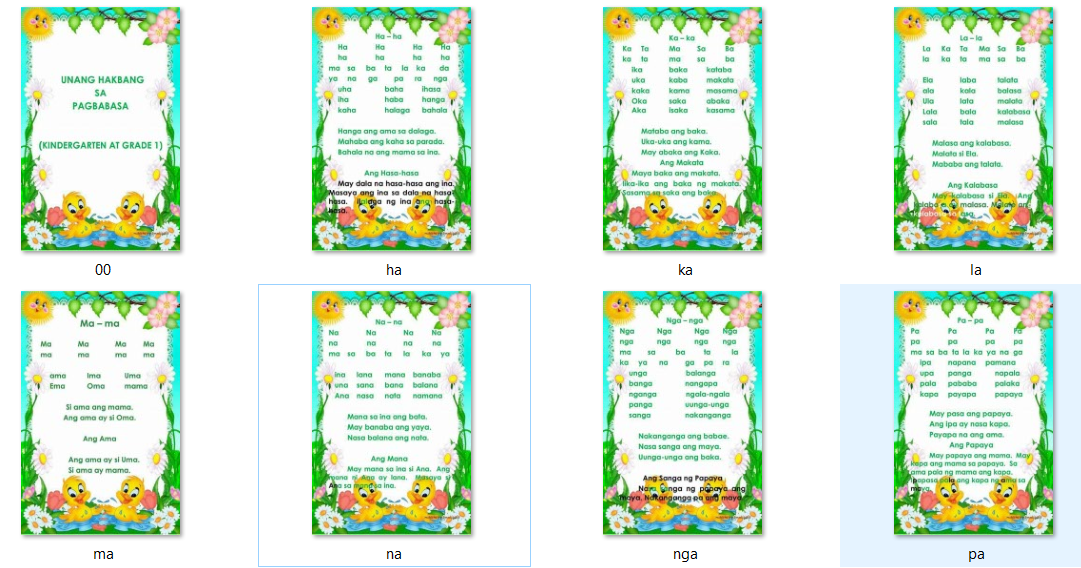Abakada Book
My daughter is learning how to read an ABAKADA book. My daughter is learning how to read an ABAKADA book. Skip navigation Sign in. This video is unavailable.
The Abakada alphabet was an 'indigenized' Latin alphabet adopted for the Tagalog-basedFilipino national language in 1940.
The alphabet, which contains 20 letters, was introduced in the grammar book developed by Lope K. Santos for the newly-designated national language based on Tagalog.[1] The alphabet was officially adopted by the Institute of National Language (Filipino: Surián ng Wikang Pambansâ).
The Abakada alphabet has since been superseded by the modern Filipino alphabet adopted in 1987.
Order/collation of the Abakada[edit]
The collation of letters in the Abakada closely follows those of other Latin-based spelling systems, with the digraph ng inserted after n.
When spelling or naming each consonant, its sound is always pronounced with an 'a' at the end (e.g. 'ba', 'ka', etc). This is also the reason for the system’s name.
| Majuscule forms (also called uppercase or capital letters) | ||||||||||||||||||||
| A | B | K | D | E | G | H | I | L | M | N | NG | O | P | R | S | T | U | W | Y | |
| Minuscule forms (also called lowercase or small letters) | ||||||||||||||||||||
| a | b | k | d | e | g | h | i | l | m | n | ng | o | p | r | s | t | u | w | y | |
[need to explain diacritics]
History[edit]
During the pre-Hispanic era, Old Tagalog was written using the Kawi or the Baybayin script. For three centuries Tagalog was written following, to some extent, the Spanish phonetic and orthographic rules.
Dr. José Rizal, was one of several proponents (including Trinidad Pardo de Tavera) of reforming the orthographies of the various Philippine languages in the late 19th-century. Like other proponents, he suggested to 'indigenize' the alphabet of the Philippine languages by replacing the letters C and Q with K.[2] Initially, these reforms were not broadly adopted when they were proposed but gradually became popular into the early 20th century.
Following the establishment of the Philippine Commonwealth in 1935, the government selected Tagalog as basis for a 'national language' (i.e. Filipino). Following this, the development of a dictionary and grammar book for this 'national language' started. In 1939, Lope K. Santos developed the Ang Balarila ng Wikang Pambansa (The Grammar of the National Language) which, apart from containing grammar rules, contained the 20-letter alphabet designated as Abakada.
The Abakada was replaced in 1976 with an expanded alphabet containing an additional 11 letters (C, CH, F, J, LL, Ñ, Q, RR, V, X, and Z) which was in turn replaced with the current 28-letter modern alphabet. At present, all languages of the Philippines may be written using the modern Filipino alphabet (officially adopted in 1987), which includes all the letters of the Abakada.
See also[edit]
References[edit]

- ^'Ebolusyon ng Alpabetong Filipino'. Retrieved 2010-06-22.
- ^Pangilinan, Michael Raymon. 'Kapampángan or Capampáñgan: Settling the Dispute on the Kapampángan Romanized Orthography'(PDF). Archived from the original(PDF) on 2006-08-21. Retrieved 2010-06-21.

Abakada is also known as the Filipino Alphabet or the Tagalog Abakada. This alphabet app is designed and reviewed by educators to teach children letters of the Filipino Alphabet. Kids will have fun playing with the Filipino Alphabet app without even realizing they’re learning from the app.
This Alphabet app is primarily aimed at preschool kids between the ages of 2 and 5. This ABC game aims to teach children the Filipino Alphabet, especially those who are not in the Philippines but are interested to learn Filipino language.
Abakada is vital in helping children develop expressive and receptive language skills, master new Tagalog words and strengthen comprehension.
For the parents, do join our community and tell us what you think or your comments and feedback. We truly appreciate anything you can give us.
Like our Facebook Page, http://www.facebook.com/FamilyPlayApps, and get the latest updates, contests and some freebies.
You can also follow us on Twitter, @FamilyPlayApps, to get the latest news and new apps from Family Play.
No Sound?
If the sound is not working, make sure the mute is turned off, then turn up the volume and the sound will work.
Need Help?
Contact us with any questions or comments: support@familyplay.co
We Value Your Feedback
We always welcome your feedback, comments and suggestions. You can contact us at support@familyplay.co
If you do like our app, please take a minute to rate and write a great review.